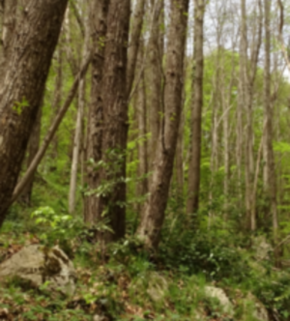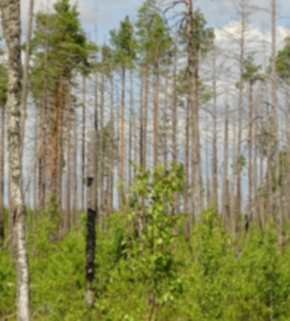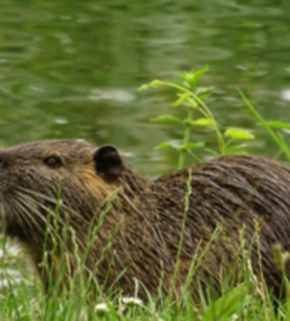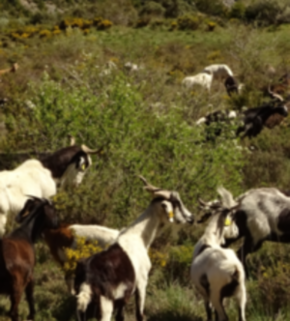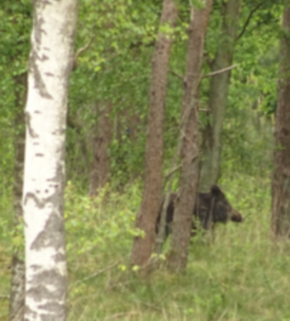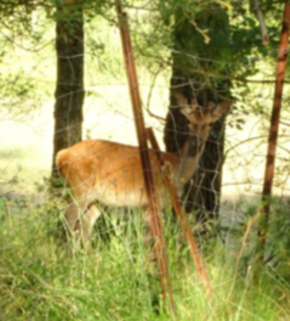Best Practice Knowledge Base
7. Risk Mitigation and Disturbance Prevention
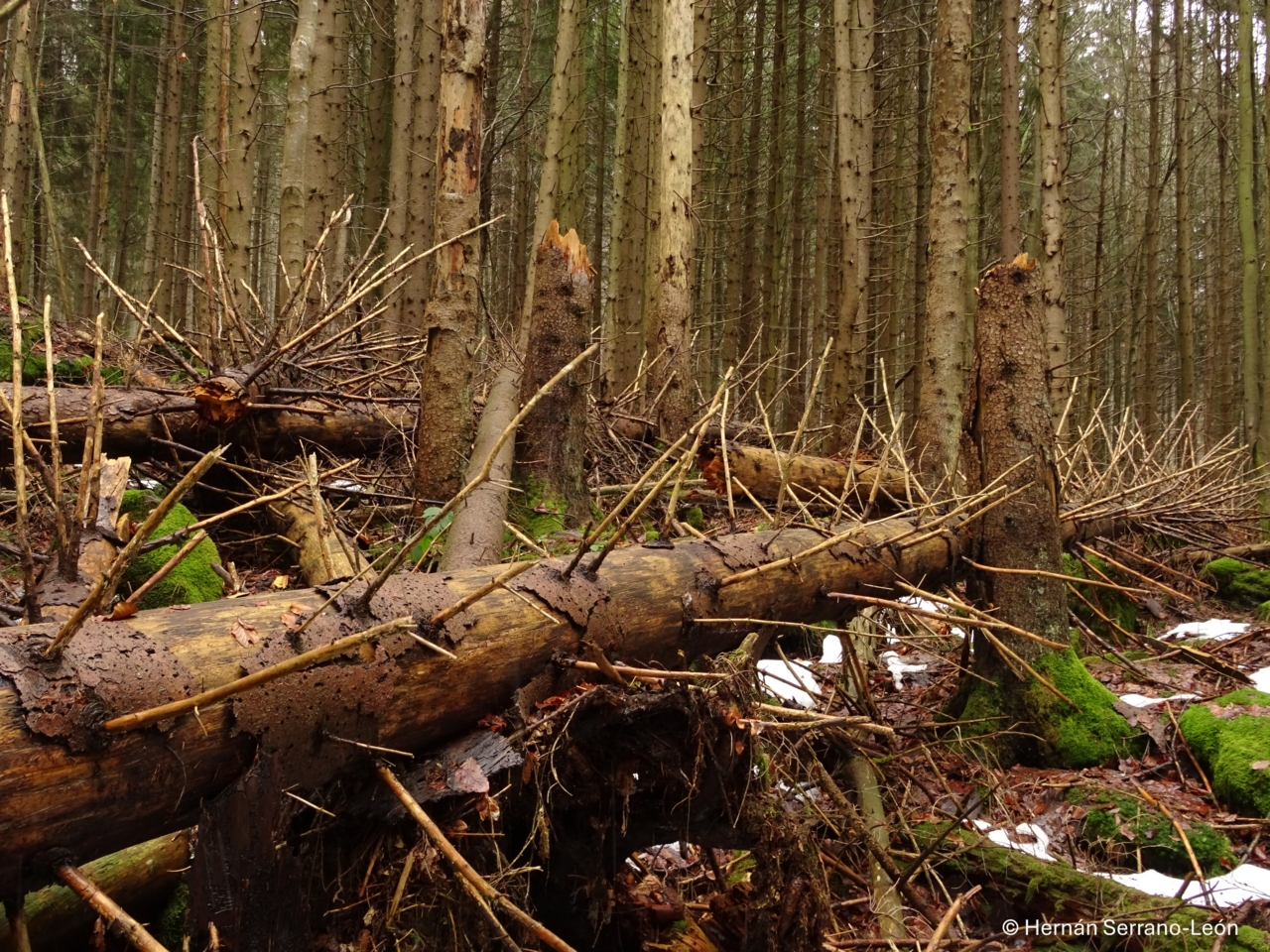
Bark beetle disturbance. Bayerischer Wald, Germany © Hernán Serrano-León
Risk mitigation and disturbance prevention measures involve identifying potential threats like fire, pests, and invasive species and implementing strategies to reduce their impact. This includes using controlled burns to manage fire risks, monitoring pest populations, preventing browsing damage, and removing invasive species to protect native biodiversity. Such measures help maintain ecological balance and prevent long-term damage, ensuring that restored areas remain stable and functional.
7.1 Sanitation harvesting
Sanitation harvesting, the removal of trees infested by bark beetles, helps limit the spread of pests and supports forest health by reducing beetle populations. Its success depends on timely removal before beetles mature, accurate identification to avoid unnecessary cutting, and proper disposal of infested material through methods like debarking, chipping, or burning to prevent further spread. Although effective, it may temporarily disrupt wildlife habitats and should be part of a broader forest management strategy.
7.2 Pest and disease control
Pest and disease control is essential to maintain ecosystem health, promote biodiversity, and ensure the sustainability of restored forests, especially in the context of climate change and pest and disease outbreak intensification. An adequate management of pests and diseases prevents the decline of tree populations, supports the recovery of native species, and enhances the resilience of forests to other environmental stressors. Implementing integrated pest management strategies, such as monitoring, biological control, and selective removal of infected trees, helps mitigate the spread of pests and diseases and sets the basis for successful forest restoration.
7.3 Fire prevention
Fire prevention measures, such as controlled burns and firebreaks tailored to the specific vegetation and terrain of an area, are key to guarantee the persistence of forests, their biodiversity, and the ecosystem services they provide. When implementing fire control measures, it is crucial to consider their ecological impact to avoid harming soil, plant communities, or wildlife habitats. Moreover, integrating natural fire regimes into fire management strategies is vital, as it promotes the regeneration of fire-adapted species and ecosystem health.
7.4 Control of invasive species
Invasive species can outcompete native flora and fauna, disrupt ecological processes, and alter habitat structures, leading to reduced resilience and increased vulnerability to environmental changes. Thus, their control is crucial to preserve biodiversity and maintain ecosystem functions. Effective management of invasive species involves methods such as mechanical removal, chemical treatments, biological control, and ecological restoration techniques.
7.5 Protection of riparian forest
Riparian forests are crucial for their role in improving water quality, controlling erosion, mitigating floods, conserving biodiversity, regulating climate, and connecting ecosystems. They act as natural filters for pollutants, stabilize soils, provide habitats for diverse species, and enhance ecosystem resilience. Protecting these forests involves creating buffer zones, restoring native vegetation, and preventing harmful land use.
7.6 Pruning
Pruning is a silvicultural technique that involves selectively removing branches from trees. Its main purposes generally include improving timber quality by enhancing the growth of clear, knot-free wood and shaping tree form; enhancing forest health by controlling diseases; and improving movement within the forest. However, it can also be used to reduce the vertical continuity of biomass within the stand, in order to reduce the risk of fires.
7.7 Grazing for fire control
Livestock grazing can be applied in the context of fire prevention by reducing vegetation biomass in the landscape. Specifically, this practice can be applied to create natural firebreaks and vegetation gaps, breaking the vegetation vertical continuity, or to manage specific plant species. When carefully managed, grazing can be cost-effective and simultaneously provide economic benefits to local communities.
7.8 Regulation of wildlife or ungulate populations to reduce herbivory
Regulating wildlife populations, particularly ungulates like deer, is a crucial strategy in forest restoration to mitigate excessive herbivory that impedes vegetation regeneration. Overabundant ungulate populations can overbrowse young trees and understory plants, hindering forest regeneration and altering species composition. Implementing population control measures, suchas culling, has been shown to protect biodiversity by reducing browsing pressure. Additionally, studies have demonstrated that excluding herbivores with physical barriers or deterrents can significantly enhance vegetation abundance in restoration sites. Another method, for example, has been to restore predator species, like wolves. Effective management of ungulate populations is essential to ensure successful forest restoration and vegetation diversity.
7.9 Fencing
Fencing involves erecting physical barriers to protect areas from herbivory by wildlife, such as deer, and to prevent livestock intrusion. By excluding these animals, fencing facilitates the establishment and growth of young trees and understory vegetation, protecting natural forest regeneration. It can also be used to protect vulnerable plant populations from herbivory or trampling. The decision to implement fencing should be made early in the restoration process to ensure the protection of new growth. However, the high costs associated with installation and maintenance can limit the practicality of fencing, especially in big areas, leading to the exploration of alternative methods. Additionally, fencing may not be feasible in all situations due to landscape and connectivity considerations, among others.



